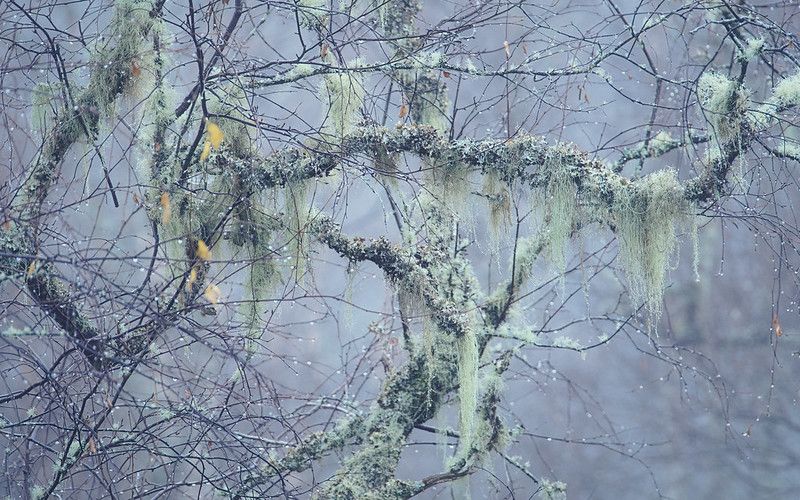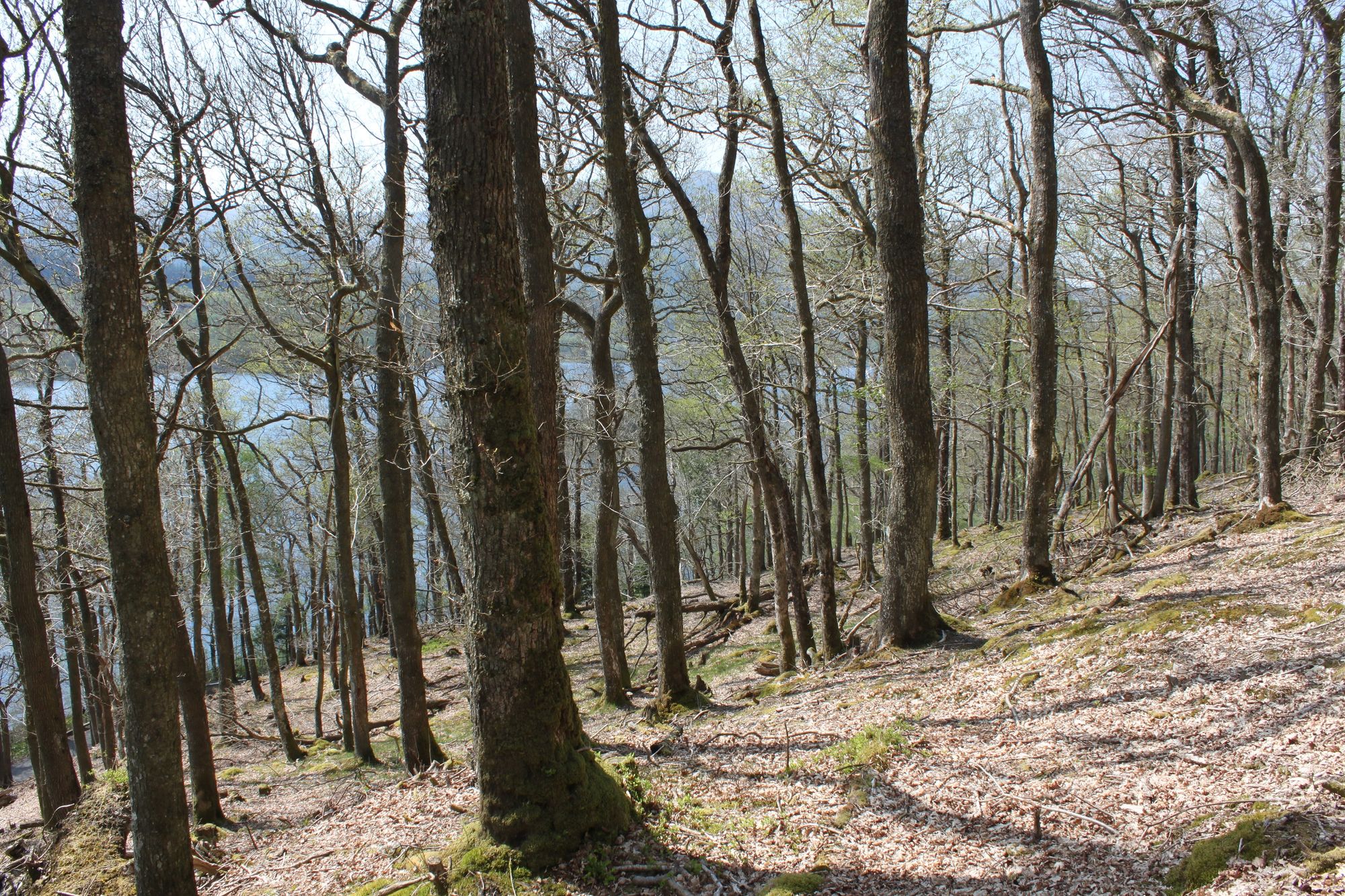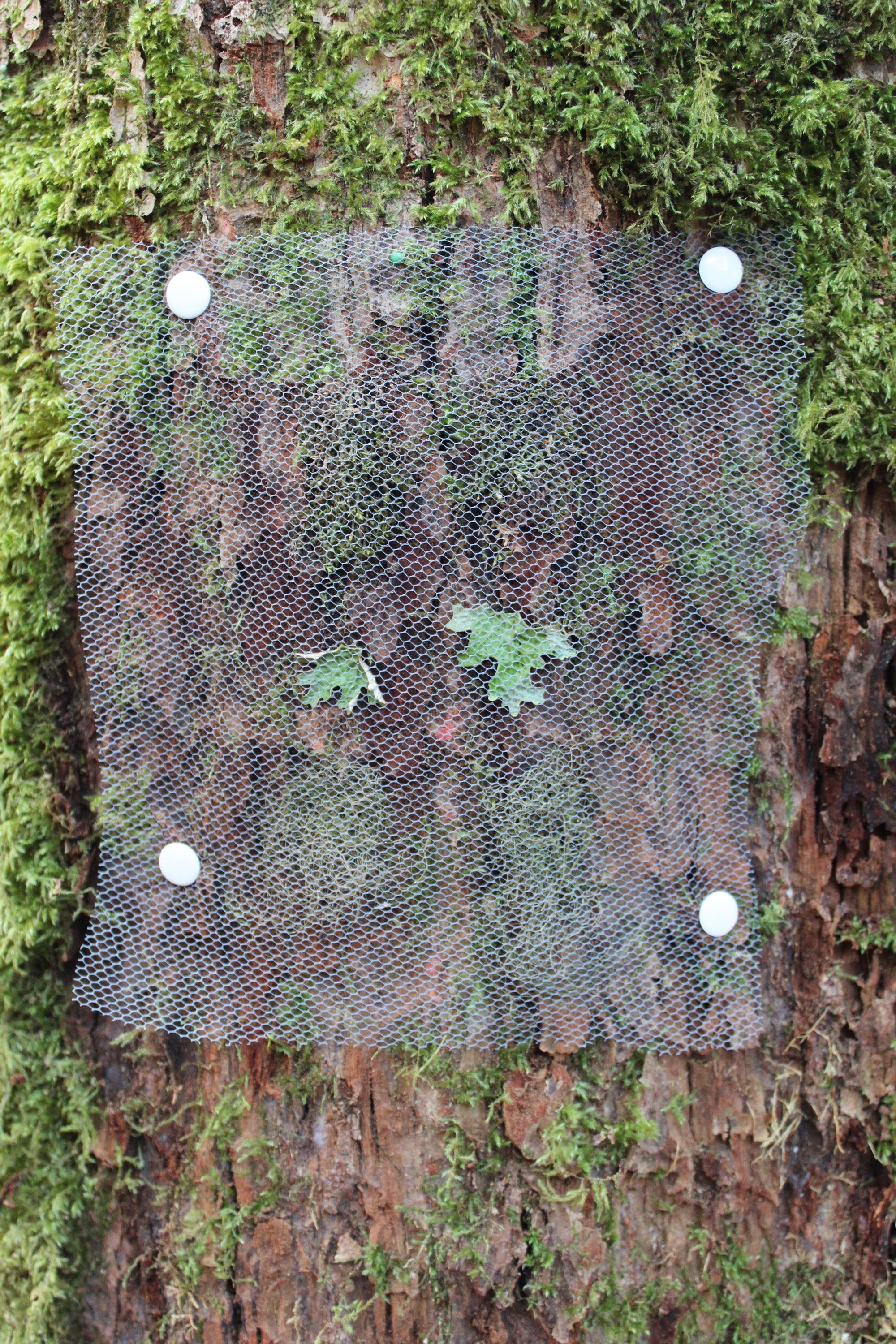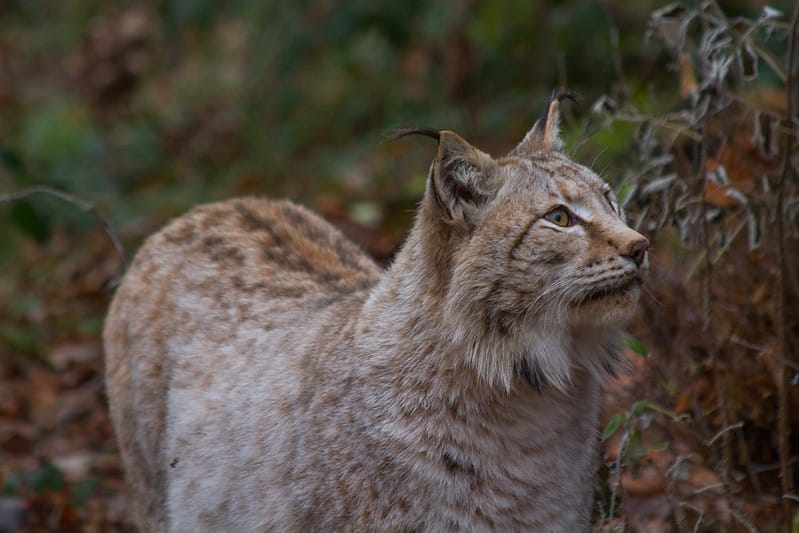
Return of the epiphytes
In Loch Lomond and the Trossachs, researchers are figuring out how to rebuild a rainforest.
In an oak woodland in the Loch Lomond and Trossachs National Park, a team of scientists are trying to regrow a rainforest.
More specifically, they are trying to reintroduce some of the smaller but vitally important species – epiphytes – that make Britain’s rainforests so distinctive.
The woodland is technically a temperate rainforest – not that you would know to look at it. The tree trunks are bald, stripped of the species that once clung to them, and the ground is bare and exposed.
These are the ghostly effects of Rhododendron ponticum, an invasive non-native species that is now well-established across Britain. Where it grows, rhododendron acidifies the soil and forms dense thickets that shade out more delicate species, including the various species of lichens and bryophytes associated with temperate rainforests.
Across Scotland, efforts are afoot to remove rhododendron – and that is what has happened here in the National Park. Over five years ago, Forestry and Land Scotland uprooted all the rhododendron from the area, leaving behind the scaffold of an ecosystem in its place, shorn of its specialist plants.

Over the past five years, Christopher Ellis, a lichenologist at the the Royal Botanic Garden Edinburgh (RBGE), has been leading an experiment in how to return the lost epiphytes to this would-be rainforest.
Epiphytes are plants which depend on trees for physical support, and include species of mosses, liverworts and lichens, which create the tangled emerald beauty for which these habitats are known.
“When you get rid of the rhododendron, you are left with the trees – but a lot of the biodiversity that makes the rainforest special is missing,” says Ellis. “Some of those species find it very hard to recolonise into recovered woodland, so that’s what the project is about.”
This is the first time that epiphyte translocation has been tested in Scotland – and it could have enormous implications for the future of this vulnerable ecosystem.
The team have trialled a variety of methods, focusing on two locations within the national park. So far, they have focused on two species of lichen – Lobaria pulmonaria (tree lungwort) and Bryoria fuscescens (pale-footed horsehair) – and the liverwort, Frullania tamarisci.
The first method involved applying a paint mixture filled with thousands of propagules onto the barks of trees. The idea was to create a flush of growth, with individuals packed tightly together. For unknown reasons, that flush of growth never appeared – although Ellis has a sneaking suspicion it could have something to do with the wetness of the rainforest washing the paint away.
But the second method is proving much more promising. The team used netting to attach juvenile lichens to the bark. Five years on, the lichens are starting to create their own attachments to the tree. The team has now taken the netting off certain areas to see whether the lichen will survive in the long term.

The project has another two years left to run, so the ultimate success rate remains unknown. While some losses are inevitable, the aim is to work out how those can be minimised – and to understand what level of loss is unavoidable – so that, in the future, restorationists will have a better idea of how much material they need to translocate to establish a viable population.
“You would hope that, for many of the absent species, they might be able to recolonise themselves, and start to make it look more complete as an ecosystem. That should be the case, and we’ll see whether that happens, and how quickly," says Ellis. "But still there will be the rare and threatened species that will need a helping hand, so it’s those we’re really focused on.”
For these precious species, the fragmented nature of their habitat is a threat in itself. Populations are so small, their ability to disperse so low, that many could die out, even if conserved at the sites where they are growing today: a phenomenon known as extinction debt.
In the case of some lichens and bryophytes, it could take anywhere from fifty to two hundred years for isolated individuals to vanish entirely. But, without efforts to boost their numbers across the wider landscape, vanish they will.
“You can look at a really nice piece of rainforest and see these species in it, and it’s easy to think we’ve protected that site, so everything’s good," says Ellis. "But actually, slowly, that species is still declining and will go extinct, because it’s not linked to other species in the landscape anymore.”
And something else is lost when these rare species disappear from the landscape: a sense of place that is unique to this ecosystem.
“When you enter into an intact rainforest, it has a sense of ancientness: you have these craggy old oaks, and they're absolutely dripping in epiphytes," he says. "They’ve got a sort of fairytale feel.”
It seems a sizable leap of the imagination to connect the team's trial sites with the lush, intact woodlands which Ellis describes. But with the right type of help for these missing species, the recovery of Scotland's rainforests might not be as distant as it seems.
This article was made possible by funding from The Pebble Trust.
Subscribe to our newsletter
Members receive our premium weekly digest of nature news from across Britain.
Comments
Sign in or become a Inkcap Journal member to join the conversation.
Just enter your email below to get a log in link.








